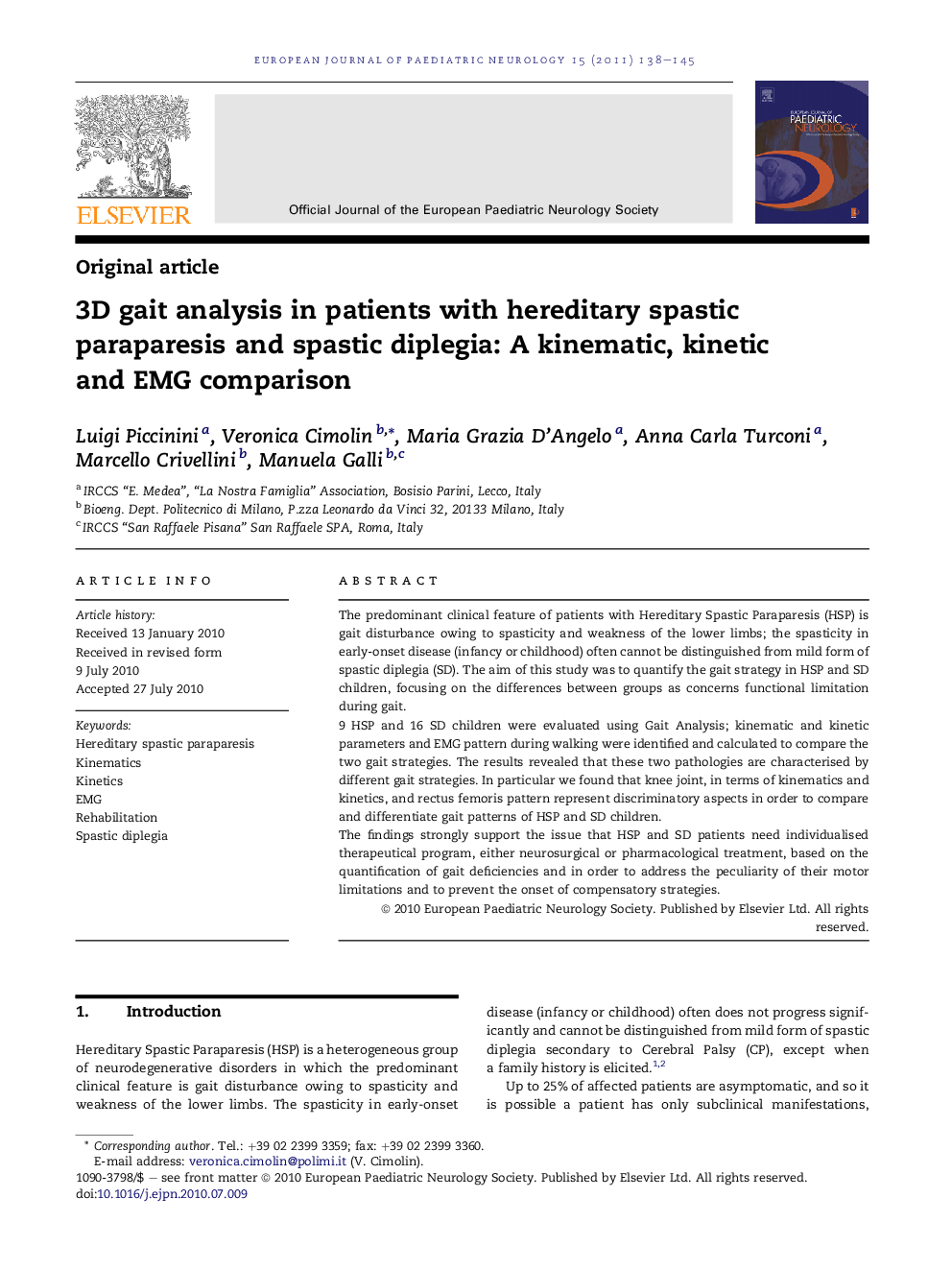| Article ID | Journal | Published Year | Pages | File Type |
|---|---|---|---|---|
| 3054240 | European Journal of Paediatric Neurology | 2011 | 8 Pages |
The predominant clinical feature of patients with Hereditary Spastic Paraparesis (HSP) is gait disturbance owing to spasticity and weakness of the lower limbs; the spasticity in early-onset disease (infancy or childhood) often cannot be distinguished from mild form of spastic diplegia (SD). The aim of this study was to quantify the gait strategy in HSP and SD children, focusing on the differences between groups as concerns functional limitation during gait.9 HSP and 16 SD children were evaluated using Gait Analysis; kinematic and kinetic parameters and EMG pattern during walking were identified and calculated to compare the two gait strategies. The results revealed that these two pathologies are characterised by different gait strategies. In particular we found that knee joint, in terms of kinematics and kinetics, and rectus femoris pattern represent discriminatory aspects in order to compare and differentiate gait patterns of HSP and SD children.The findings strongly support the issue that HSP and SD patients need individualised therapeutical program, either neurosurgical or pharmacological treatment, based on the quantification of gait deficiencies and in order to address the peculiarity of their motor limitations and to prevent the onset of compensatory strategies.
